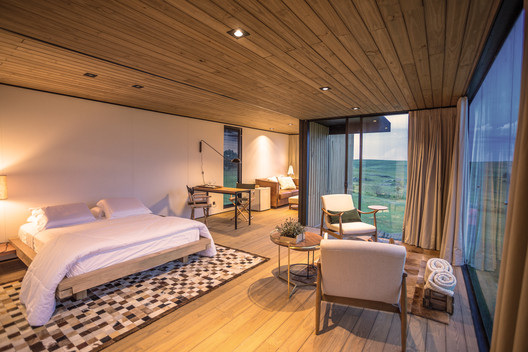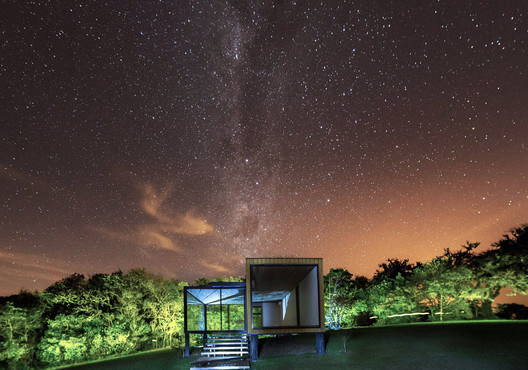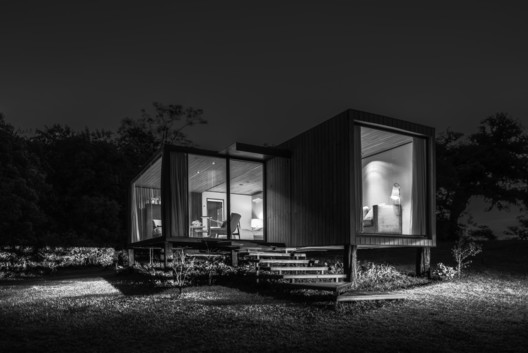
-
Architects: Bruno Zaitter Arquitetura e Urbanismo
- Area: 50 m²
- Year: 2016
-
Photographs:Sergio Mendonça Jr.
-
Manufacturers: Berneck, Blue Glass, Gerdal, Madeiras Monte Claro

Text description provided by the architects. Located in the region known as Campos Gerais of the state of Paraná in Brazil, the Refúgio da Cainã is one of the accommodations of a farm hotel located exactly in the area of a geological fault called the “Escarpa Devoniana”. With a privileged view in the foreground of the vast native forest, on the horizon is possible to see the city of Curitiba and the mountains, distant about 50km and 120km respectively.


























